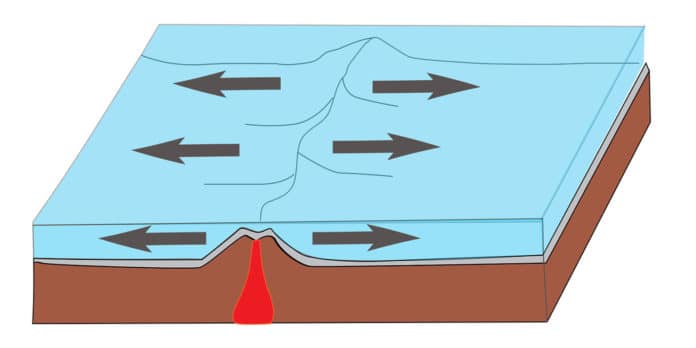A new study offers insights into why some subduction zones fail while others are set up as long-term, steady-state systems. The study suggests that the ancient rocks on the coast of Oman that were once driven deep down toward Earth’s mantle may reveal new insights into subduction.
The collision of two tectonic plates causes subduction. Where oceanic and continental plates meet, the denser oceanic plates normally subduct and descend into the mantle.
Occasionally, oceanic plates move on top or obduct, forcing continental plates toward the mantle instead. But the buoyancy of the continental crust can cause the subduction to fail, carrying the material back toward the surface along with slabs of oceanic crust and upper mantle called ophiolites.
Joshua Garber, assistant research professor of geosciences at Penn State, said, “The Samail Ophiolite on the Arabian Peninsula is one of the largest and best-exposed examples on the surface of the Earth. It’s one of the best-studied, but there have been disagreements about how and when the subduction occurred.”
Using nearby rocks from the Saih Hatat formation in Oman, scientists investigated the timing of the subduction.
The process’s heat and pressure made garnet, zircon, and rutile crystals in a critical set-up of exceptionally metamorphosed rocks that saw the most extreme conditions during subduction.
Scientists used advanced techniques, including measuring isotopic dates and trace elements, to determine the minerals created almost 81 to 77 million years ago.
Garber said, “What’s interesting about this is that they were all dated by slightly different methods, but they all gave us essentially the same results. This tells us that all the minerals in the rocks have a coherent story. They all record the same metamorphic episode at the same time.”
“What our findings suggest is that this continental material was not subducted deep into the mantle a long time before the ophiolite formed as previously thought. Our data support a nice sequence of events that happened in a tighter window, and that makes more geological sense.”
Scientists said, “The subduction of the continental margin occurred after the abduction of the Samail Ophiolite. The most deeply subducted continental material was likely anchored to more dense rocks. When this anchor broke, the buoyant continental rocks exhumed, first quickly and then slowly during a lengthy residence in the lower to the middle crust. It eventually becomes exposed in tectonic windows through the ophiolite.”
The findings are published in the Journal of Geophysical Research: Solid Earth.
